We reach stage number ten in our journey through Italian museums in search of fantastic animals and places, and our new destination is Basilicata. A region teeming with fantastic creatures: dragons, sphinxes, chimeras, harpies and many others. Let’s set off on this journey to discover the fantastic animals scattered in Basilicata’s museums, remembering that museums are safe places to visit alone, with family or with friends, they are places suitable for all ages, and that the project that Finestre Sull’Arte proposes, in collaboration with the Ministry of Culture, is meant to be a way to discover cultural places from a different point of view.
The animal that appears on this terracotta relief preserved at the National Museum of Metapontum is a winged horse. Indeed: there are two of them, and they are pulling a chariot on which an armed warrior finds a place. It is a depiction of the departure of a hero: according to scholars Dieter Mertens and Madeleine Mertens-Horn it could be a Homeric hero, perhaps Achilles leaving for the Trojan War. It is a scene that anciently decorated the shrine located in the locality of San Biagio alla Venella, in the territory of ancient Metapontum. In this area there was an oikos, a small sacred building, dated to the end of the 7th century B.C., which was decorated with a continuous frieze fittile (i.e., terracotta), probably placed on the walls of the small temple, or used to cover the ends of the roof rafters. “This type of decoration on the fictile slabs,” explains scholar Savino Gallo, “was initially achieved through the use of a roller stamp. A valuable tool attributed to an artist from the Cyclades, who carried it with him from one shrine to another.”
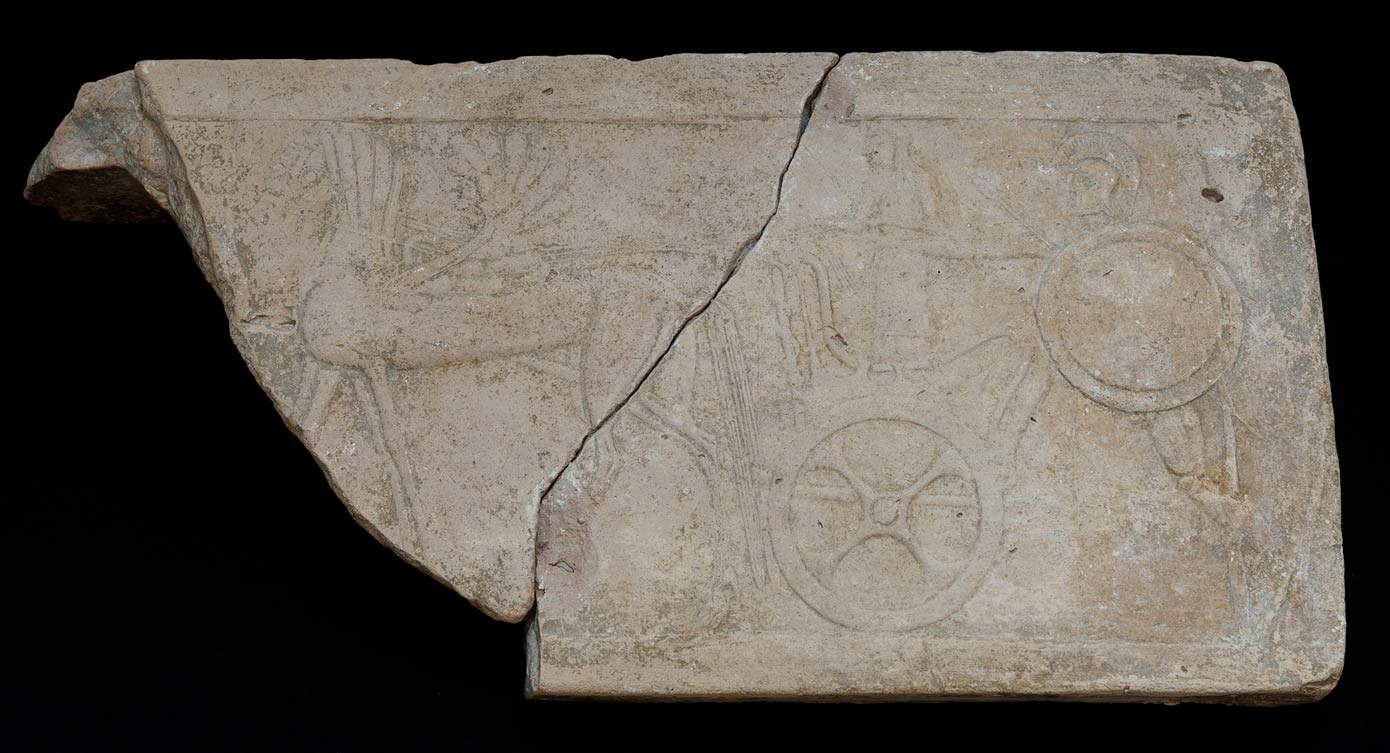
The mosaic where this sea monster, recognized as Scylla, appears comes from the Terme Maggiori of Grumentum: this was the main spa facility of this important Roman city of Lucania located in the Agri Valley, and whose remains are found today near present-day Grumento Nova. The Terme Maggiori of Grumentum were decorated with marble and rich mosaics: the one with the sea monster decorated the frigidarium, that is, the place where cold baths were taken. It was not uncommon for thermal mosaics to be depicted with marine-themed scenes: in this case we see the nymph Scylla who, according to Greek mythology, was transformed by the sorceress Circe into a monster with a woman’s body and twelve legs (six with dog heads and six with snake heads). Circe in fact wanted to punish Glaucus, who had fallen in love with the beautiful Scylla by rejecting her: feeling rejected, she took revenge by turning the young woman into a horrible monster. The marine-themed depiction in the frigidarium clearly recalls the function of the thermal pools.
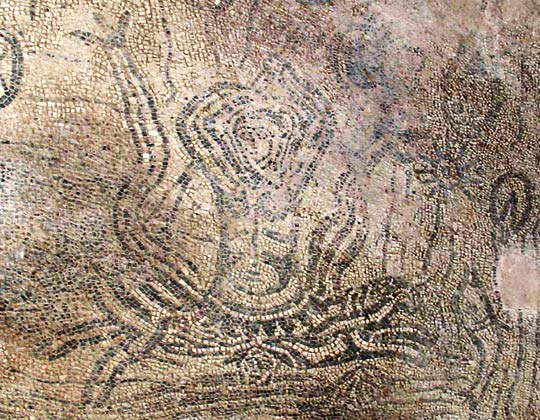
“Around 560-550 B.C., on a plateau on the northern slopes of the high ground of Torre di Satriano,” explains archaeologist Mara Romaniello, “a sumptuous residence is erected that stands out for its monumental layout and external decorations, but also for the valuable artifacts found inside. The passage to the ceremonial hall was through a vestibule filled with ceramics, bronze vessels and weapons, passing a compartment closed by a fir-wood door.” This is where this splendid protome (a decorative element consisting almost always of the head alone) of a winged griffin, made of cast bronze and dated to the 6th century B.C., comes from: it is an animal with the body of a lion and the head of an eagle. Legend has it that griffins inhabited the region of Scythia (a vast area stretching from the west of today’s Ukraine to present-day Kazakhstan) and were in a perpetual struggle with the legendary people of the arimaspi (one-eyed men) for possession of gold mines. The animal in the National Museum of Basilicata is shown with large globe-shaped eyes, a cylinder-shaped horn with an enlarged upper end. It is caught opening its beak, showing its tongue. It also has ears, which are pointed. The griffon is a fantastic animal from Eastern mythology, depicted with the body of a lion and the head of an eagle.
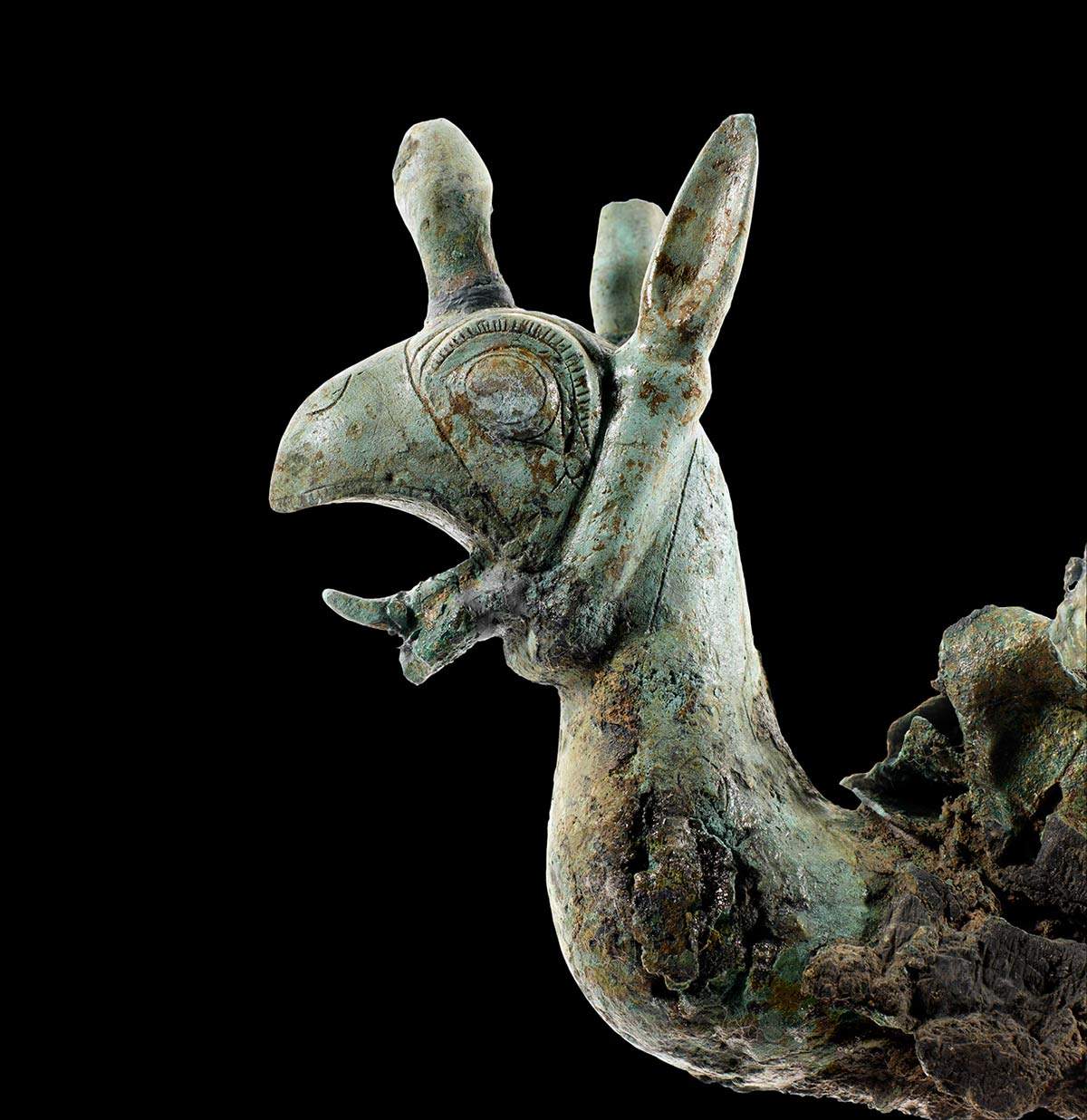
The sphinx is one of the most featured animals in ancient art: according to Greek mythology, this fantastic animal, with the head and breasts of a woman, the body of a dog, the wings of an eagle, the paws of a lion and the tail of a snake, was the son of Echidna and Typhon and lived on a cliff in Boeotia, along the road to Thebes. Travelers who ventured there were forced to answer a riddle, and those who failed to answer were devoured. The only one to solve the riddle was the hero Oedipus: the sphinx, defeated, decided to commit suicide. The one on display at the National Archaeological Museum of Basilicata in Potenza decorated the roof of the aforementioned palace of Torre di Satriano, one of the landmarks of Ancient Lucania, and is dated to the 6th century B.C.: as befits a sphinx that was intended to decorate a sumptuous palace, it is a sculpture of great quality and elegance, featuring an elongated body, a crown on its head, its hair gathered in three braids falling over its shoulders, and its wings spread as if the animal were about to take flight.

The chimera was a monstrous animal from Greek, Roman and Etruscan mythology that had the snout and body of a lion, a goat’s head and a snake-like tail, and was capable of spitting flames. She too, like the sphinx and like other monsters (such as the Hydra of Lerna and Cerberus) was the daughter of Typhon and Echidna. She terrorized the inhabitants of Lycia and according to myth was defeated by the hero Bellerophon. The one in the Melfese National Archaeological Museum, dating back to the 6th century B.C., decorated a shield found in Tomb B of the Chiuchiari necropolis near Melfi, which was identified in the mid-1950s as part of some social housing work on the edge of the Lucanian city’s historic center. “The grave goods from tomb B, referable to a male individual,” explains archaeologist Erminia Lapadula, “consist of ceramic and metal vessels, weapons and tools. The presence of the iron wheels of a chariot suggests the high social status of the deceased within the group to which he belonged.” To the defensive weapons also belongs the bronze emblem depicting a chimera. “The foil, embossed,” Lapadula points out, “has been identified as an episema, a decoration applied to the center of the shield. The recent restoration work (2021) allowed for a thorough and careful analysis of the artifact, which opens up new interpretative hypotheses that are currently being evaluated.”
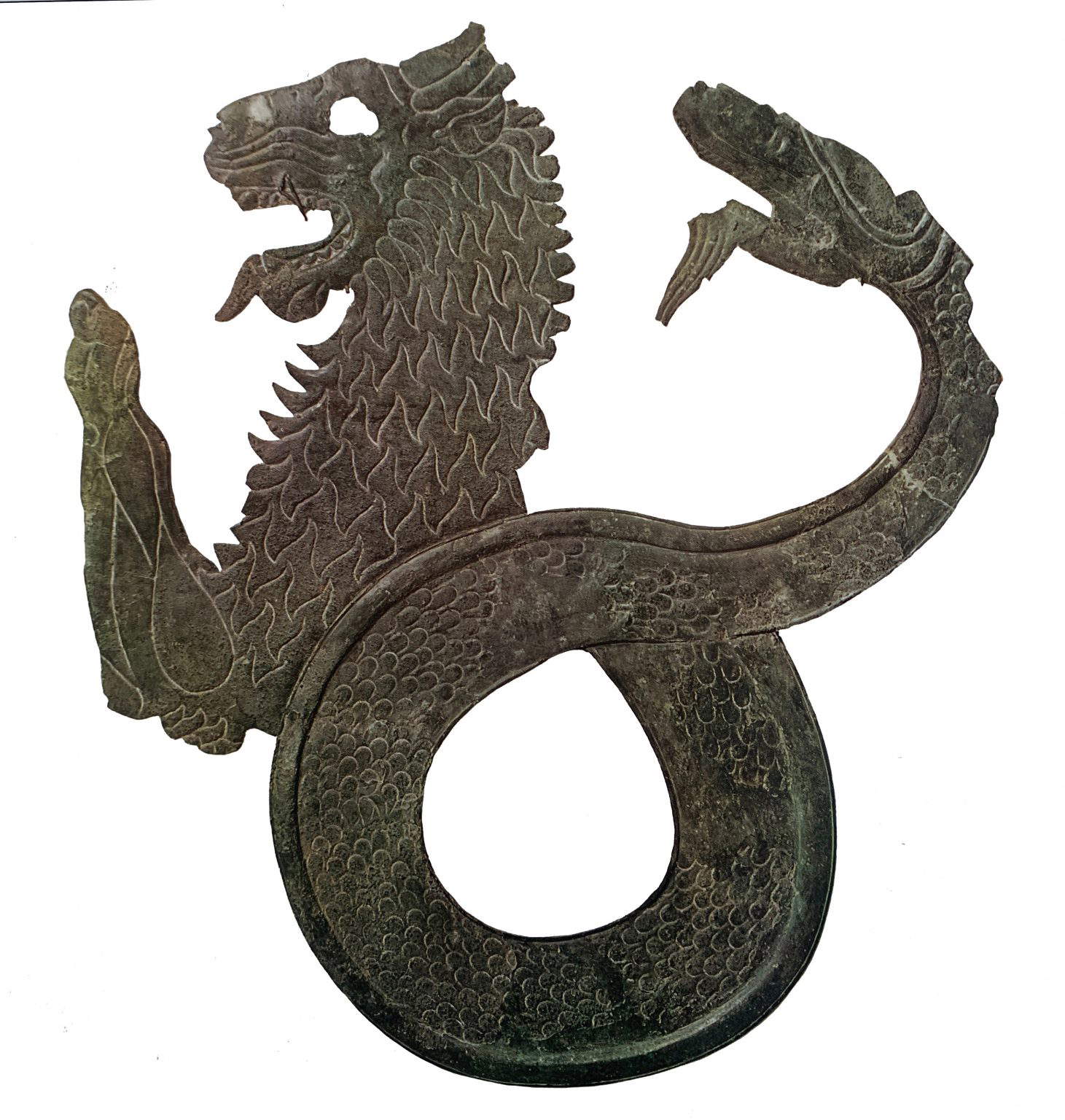 Lucanian art, Episema with chimera (6th century B.C.; bronze; Melfi, Museo Archeologico Nazionale del Melfese Massimo Pallottino)
Lucanian art, Episema with chimera (6th century B.C.; bronze; Melfi, Museo Archeologico Nazionale del Melfese Massimo Pallottino)As mentioned above, spa mosaics were often decorated with fantastic animals that populated the seas according to Greco-Roman mythology, and the baths of Venosa, the birthplace of the great poet Horace, are no exception. In the Lucanian city’s Archaeological Park there are the remains of a spa facility from the 1st-2nd century AD, and the large mosaic floor decorating the frigidarium, however, dates back to a later renovation. “The mosaic, which represents one of the most iconic elements of the site,” explains Rosanna Calabrese, “features an intricate geometric border and a figurative panel with a marine subject. Among dense waves are depicted both real animals, such as minnows, dolphins, a snake and a moray eel, and four sea monsters with broad swirling, tricuspidate tails. The central panel toward which all the real and fantastic animals converge, now lost, depicted the sea goddess Thetis, emerging from the waves, with the helm, a symbol of sea power, resting on her right shoulder.”
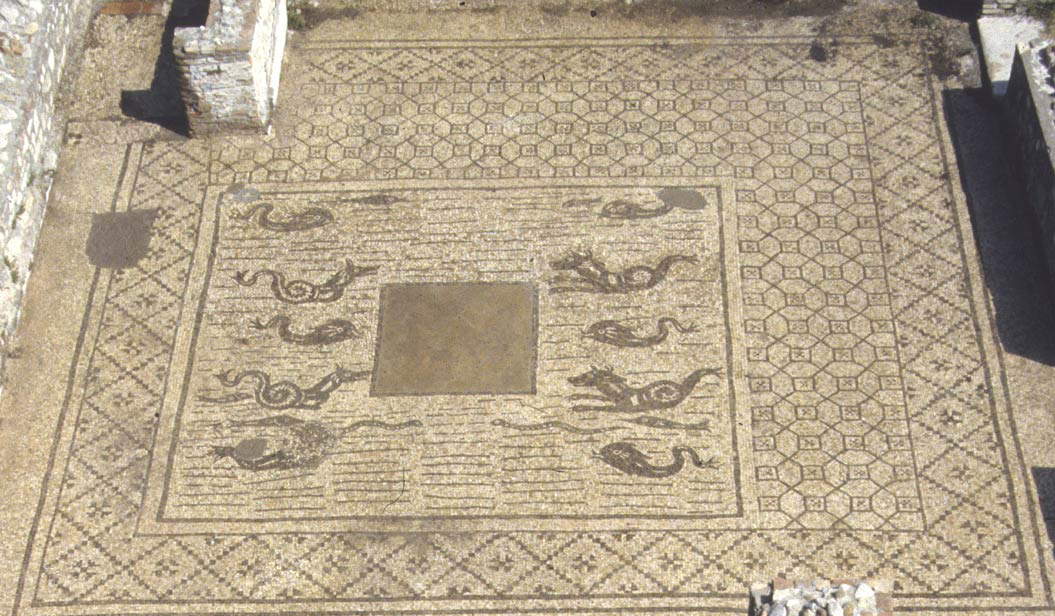
The term hydria is used to identify a vessel that among the ancient Greeks served mainly to carry water. At the National Archaeological Museum of the Siritide is preserved a red-figure one that was part of the funerary equipment of the Tomb of the Painter of Polycorus (5th century B.C.), where the epilogue of Euripides’ Medea, which was first performed in Athens in 431 B.C., is depicted.C.: she is in the center, caught fleeing after killing her children to take revenge on her husband Jason, who was guilty of repudiating her to marry Glauce, daughter of Creon, king of Corinth. Medea, after procuring an excruciating death for Glauce and Creon through her spells, decides, though torn by grief, to kill the children she had with Jason in order to deprive him of an offspring. In thehydria in the Siritide Museum, Medea is depicted on the magical chariot, pulled by two dragons, which was provided to her by the sun god, Helios, her paternal grandfather. The two serpents have bodies covered with scales, spotted backs, and flaming crests, and they propel the chariot by making sinuous movements with their bodies. “Medea, resorting to her own magical arts,” points out scholar Savino Gallo, “carries out a heinous revenge by striking Jason in his affections, but unexpectedly escapes judgment thanks to the support of Helios, and thus appearing as a supernatural and tremendous figure, soaring through the air thanks to her fearsome dragons.”
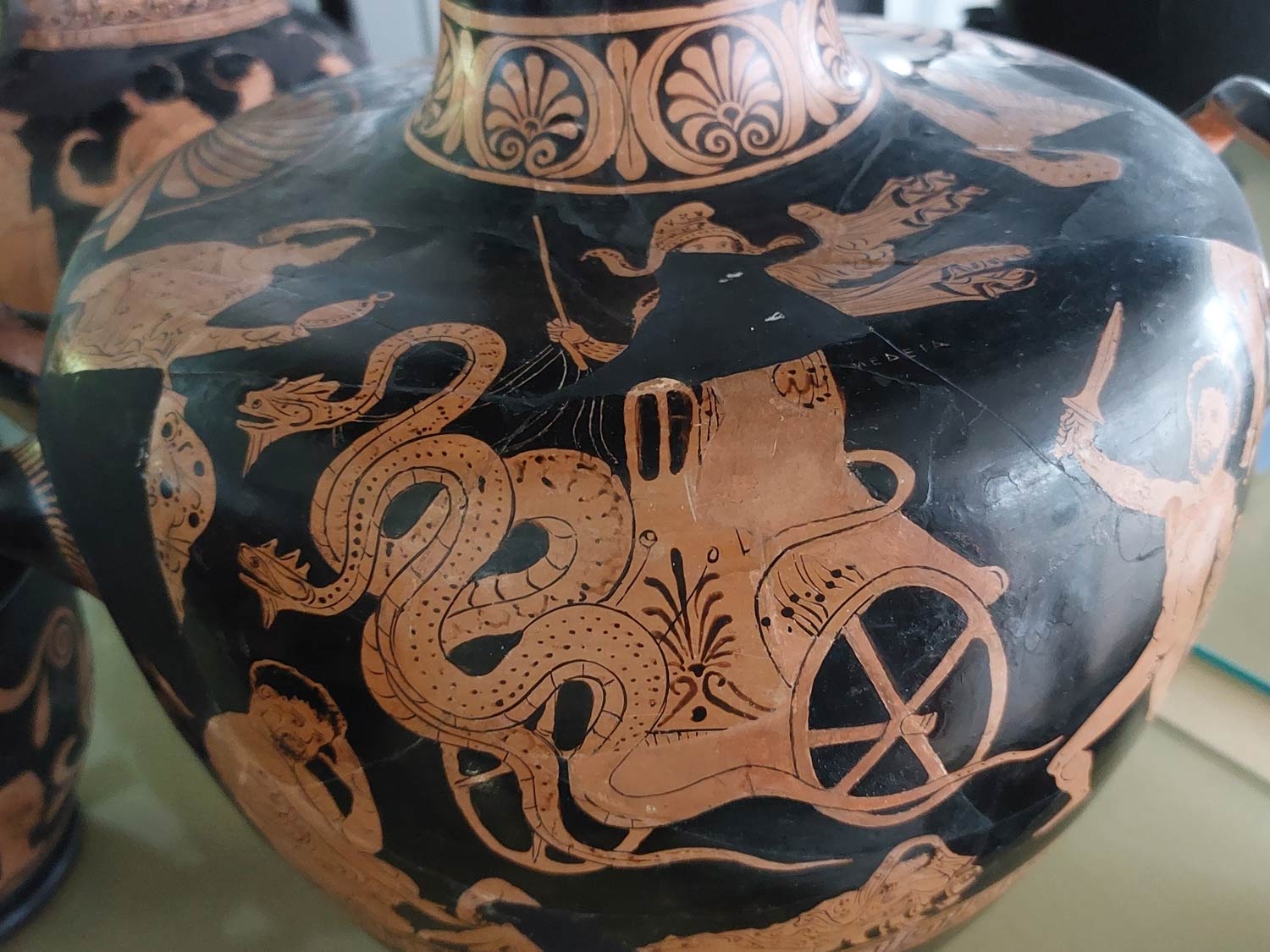
A rython was a kind of goblet, usually horn-shaped, that was used for drinking or for pouring drinks at libations. They could often be shaped and very elaborate, as in the case of this rython preserved at the National Archaeological Museum “Domenico Ridola” in Matera, part of the National Museum of Matera. On the body of the rython we see a winged figure seated on an Ionic capital, with his head in profile and his body turned three-quarters to the left (probably Eros: moreover, we see him holding a necklace with a white pendant in his left hand, and wearing earrings, a string of pearls, and double armillas on his forearms and left leg), while at the base here appears the monstrous Scylla. “This particular rython belongs to the Rizzon Collection, among the most important private archaeological collections because of the homogeneity of the objects and their considerable intrinsic value,” explains archaeologist Adriana Sciacovelli. The collection became part of the state patrimony in 1990, following a purchase and sale by which the state secured seventy-four Italiotic vases, both Apulian and Lucanian, allocating them to the “Domenico Ridola” National Archaeological Museum.
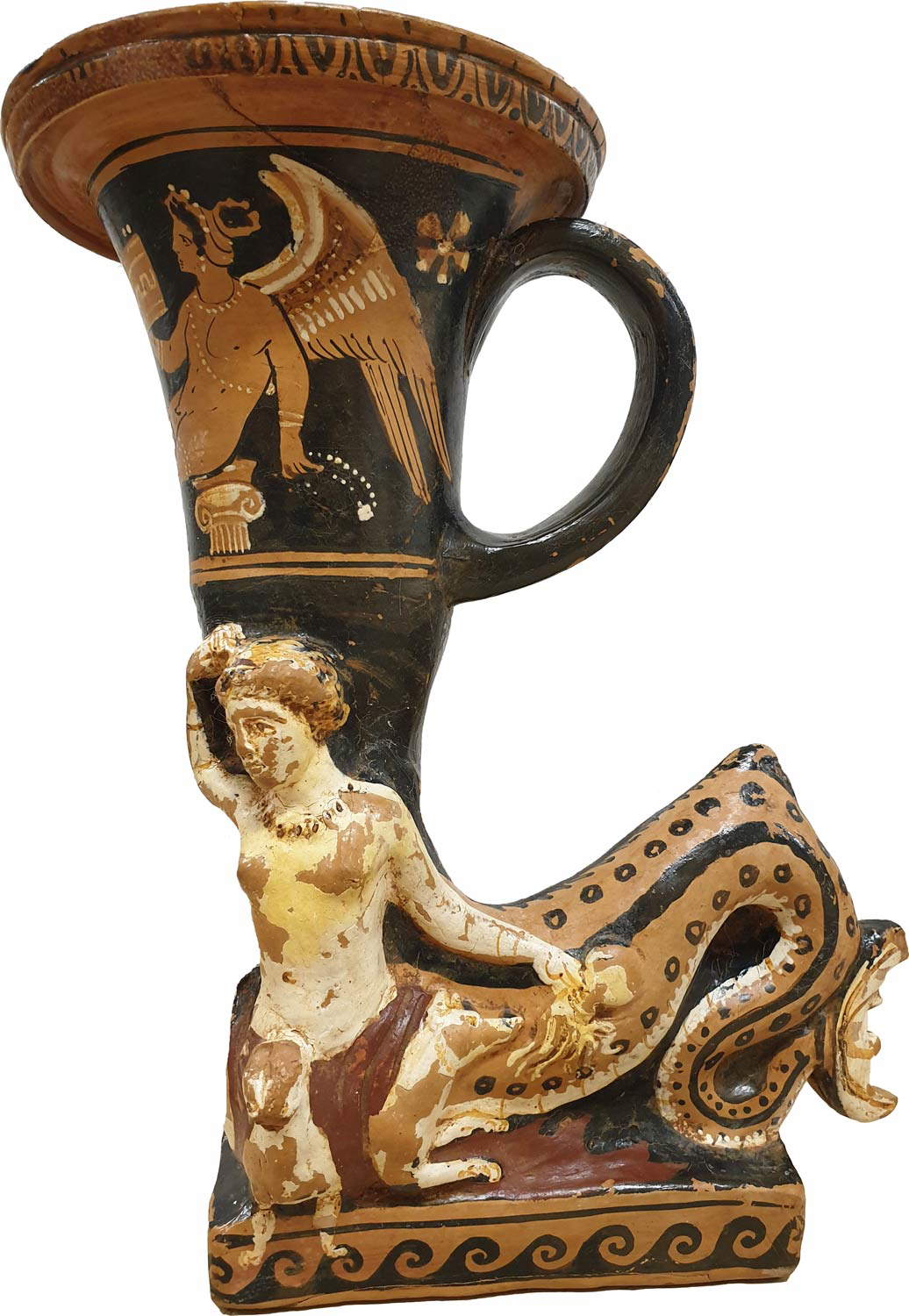 Apulian
ApulianThe story of Perseus and Andromeda is one of the best-known in Greek mythology: Andromeda, daughter of Cepheus king of Ethiopia and Queen Cassiopeia, had been tied to a cliff on the sea by the god Poseidon, intent on punishing her mother Cassiopeia for daring to say that Andromeda’s beauty was superior to that of all the Nereids, the sea nymphs. The angry sea god decided to have her devoured by Cetus, a terrible sea monster. To save the maiden, however, intervened the hero Perseus, who came to free her from the monster on the back of his winged horse Pegasus. In this elegant 18th-century oil on glass by the Neapolitan painter Girolamo Cenatiempo (documented in Naples from 1705 to 1742), Andromeda is the great protagonist, and with her beautiful naked body she occupies almost the entire composition. The monster is on the left, represented as a large, sharp-toothed fish, toward which Perseus is riding Pegasus to defeat it. “The work,” explains art historian Mariagrazia Di Pede, “is part of a series of ten small oil-on-glass paintings that tell, in a vaguely erotic tone, divine and human loves and mythological stories.” And in this case Cenatiempo allowed himself to be inspired by Ovid’s Metamorphoses: “the waves roared and a monster appeared, who advancing stood over the immensity of the sea and with his breast covered a wide stretch of it. And behold, as a ship, propelled by the sweat of young arms, with outstretched rostrum swiftly ploughs the sea, the monster, cleaving the billows with the impetus of his breast, was now no farther from the rock than the space that a projectile, hurled by the vortex of a sling, can travel in the sky.”

The myth tells that Calai and Zete were winged twin brothers, sons of Borea and Orizia, and they joined Jason on the Argonauts’ quest for the Golden Fleece in Colchis. When the Argonauts arrived in Salmidessus, Jason asked the king of the city, Phineus, about the fate of the expedition. Phineas, however, told Jason that he would answer only if someone freed him from the harpies, which had been tormenting him for some time. Harpies were animals with the face of a woman and the body of a bird of prey, who haunted Phineas by preventing him from eating. Calai and Zete themselves fought with the harpies, finally succeeding in getting the better of them and driving them out on the Elote islands. In the scene, painted by the workshop of Alessandro Fischetti (Naples, 1773 - 1802) and coming from Palazzo Malvezzi in Matera, we see the two winged twins engaged in a furious struggle with the monstrous animals, while King Phineas (wearing the crown), the leader of the expedition Jason and the hero Peleus (another of the expedition’s participants) watch in dismay. From under the table (the harpies in fact prevented Phineas from eating) sprouts a dog, who watches the whole thing with curiosity.
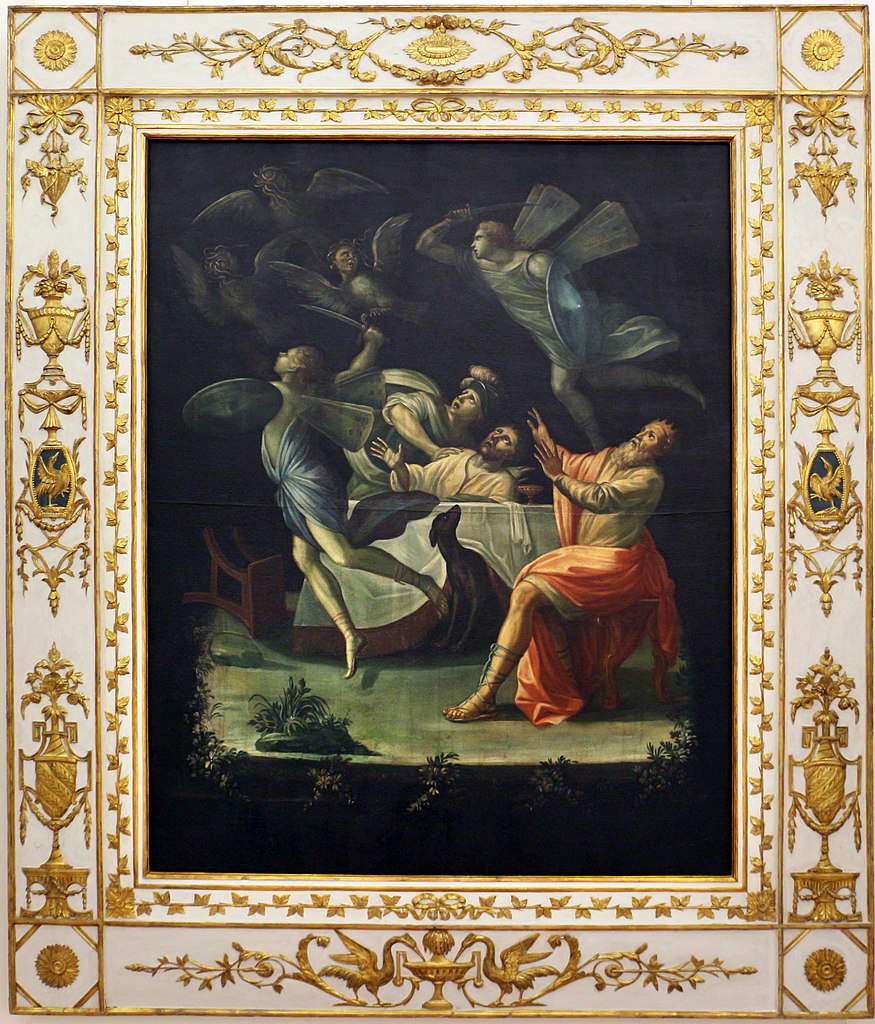
 |
| Animals and fantastic places in Italy's museums: Basilicata |
Warning: the translation into English of the original Italian article was created using automatic tools. We undertake to review all articles, but we do not guarantee the total absence of inaccuracies in the translation due to the program. You can find the original by clicking on the ITA button. If you find any mistake,please contact us.